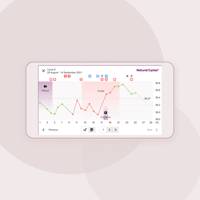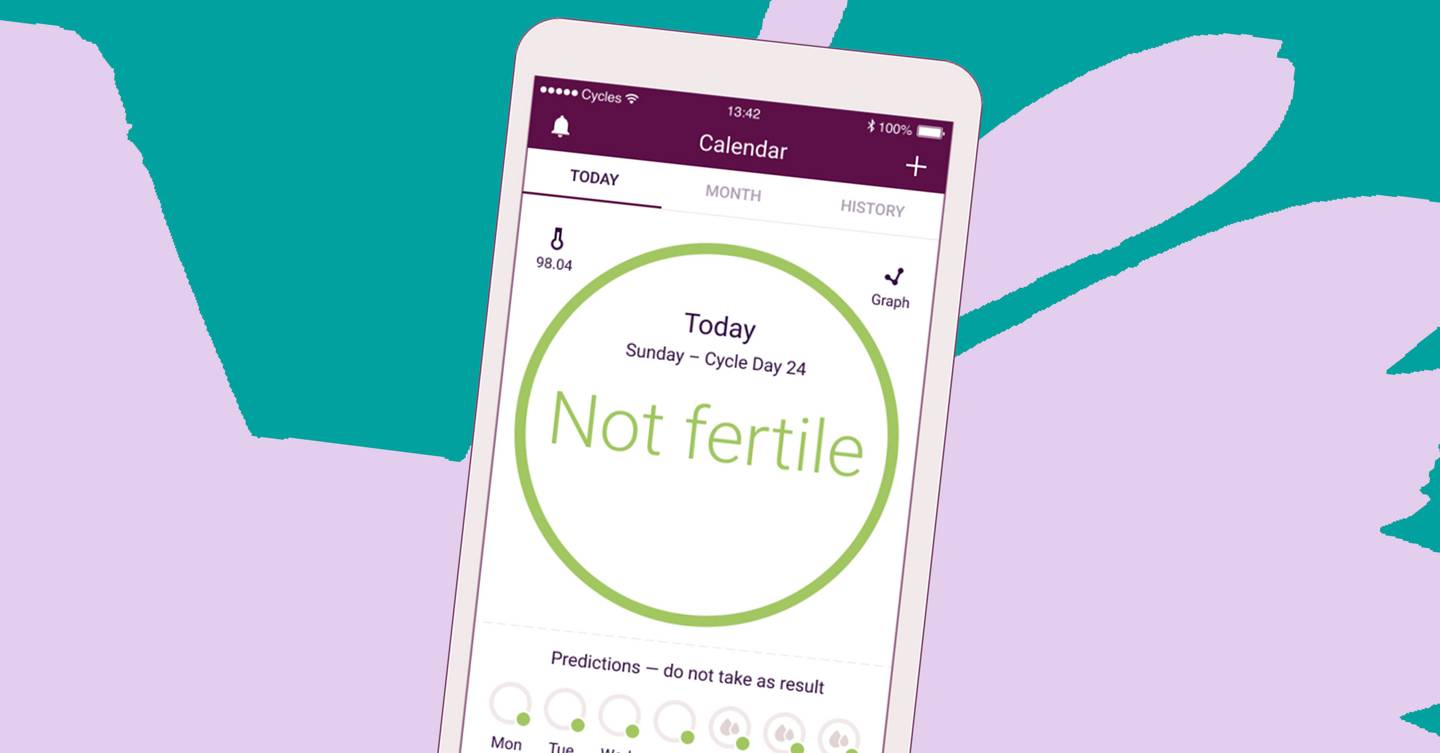It would be fair to say that there’s a lot of opinion out there on digital birth control app Natural Cycles, which recently received FDA approval to launch ‘wearable’ contraceptives.
The platform, which itself has had FDA approval since 2018, works by users taking their temperature daily and inputting their results into the app – determining if you are ovulating or not, and therefore at risk of pregnancy.
There are thousands of happy customers that swear by Natural Cycles’s algorithm, particularly since it means ditching hormonal contraception such as the pill or the coil.
But in the same breath, reports of unwanted pregnancies have hit the headlines over the years, as well as concerns raised over the app’s efficacy when it comes to human error.
If you don’t know what to believe about Natural Cycles and digital birth control, read on for the facts…
What is Natural Cycles?
Natural Cycles is an app that uses a specific algorithm to track when you’re fertile or not, by recording your basal body temperature – aka your lowest resting temperature – which naturally rises slightly after ovulation.
Typically, the app asks you to record your temperature immediately upon waking and then before you actually get out of bed – so before you pee, or do anything else. With the launch of a ‘wearable’ element, however, this could be set to change (more on that later).
The app will then tell you if you are fertile or not, and therefore whether you need to use protection if you have sex.

Does it work?
The brand’s clinical studies state that the efficacy rate of Natural Cycles is 93% with typical use and 98% with perfect use (when using protection on each fertile – or ‘red’ – day). The studies involved 15,000 women and analysed 180,000 menstrual cycles.
The app does note that clinical evidence is very different to real life evidence however, since participants in studies might perform better in a controlled setting than in everyday life – though it maintains that real life effectiveness has been in line with their claims for the past four years.
Dr Shabana Bora, Consultant Gynaecologist and Fertility Specialist at the Lister Fertility Clinic, however, isn’t convinced:
“They claim to be 93% effective which in comparison to hormonal and non-hormonal contraceptives is not highly sensitive,” she tells us. “This means that an unwanted pregnancy could potentially occur in up to seven women in a hundred if this is used as a sole method of contraception. My advice for natural cycle contraception is that it should only be used in the context of patients who wouldn’t mind if their method failed and would be happy with an unplanned pregnancy. It should also only be used in the context of women in committed relationships as this provides no protection from sexual transmitted infections for which barrier methods are still a must.”
There’s science behind what she’s saying, too.
“Basal body temperature (BBT) estimations work on the premise that progesterone (a hormone produced by the follicle after a woman has ovulated) will raise the BBT by a marginal 0.2 to 0.4%, but some studies have shown that even in the presence of ovulation, up to 75% of women have no rise in BBT, hence we conclude that they can be very inaccurate.”
How common is unwanted pregnancy using Natural Cycles?
The app states that out of 100 women over one year of ‘typical’ rather than ‘perfect’ use, seven on average get pregnant in total.
Five of these cases are due to having unprotected sex on ‘red’ days, two despite using a condom or abstaining on red days, and 0.7 come from the app giving a wrong green day.
These numbers are in line with ‘typical’ use of the contraceptive pill, which is also estimated to have a 93% efficacy rate. The copper and hormonal coils come in at 99% for both typical and perfect use.
It’s unknown if every unwanted pregnancy following use of Natural Cycles has been recorded.

Does it work with irregular cycles?
Following on from Dr Shabana’s argument against BBT being the sole determiner of fertility since we don’t all experience an increase, it’s women with irregular cycles that are even more at risk, as those with regular cycles could rely on dates, as opposed to temperature.
“The precise number of fertile days in a woman’s menstrual cycle is largely uncertain and conception can occur during a 6 day window ending on the day of ovulation,” Dr Shabana explains. “Some women have very long, erratic cycles – particularly those who have polycystic ovaries, so it may be impossible to define the window of ovulation as it may not occur at all, or a woman may need to test her BBT daily for 3 or 4 weeks in order to determine when to avoid intercourse. It can also be affected by stress and other hormones, such as thyroid abnormalities.” In short, it seems pretty pointless for women with irregular cycles.
What if I forget to take my temperature?
According to Dr Shabana, “The rise in BBT from progesterone release can fluctuate from 2 to 6 days in women, so while the app claims that if the BBT is not measured for a few days it can still be reliable, it sounds unreliable to me as it could imply that a woman is infertile when she is not.”
She suggests another more useful indicator: “Most women experience mild pelvic discomfort at the time of ovulation or notice cervical mucus changes, which can be a more sure sign of ovulation and signal that you shouldn’t have sex. But again, this will not be helpful if intercourse has already taken place a few days prior, as sperm can survive in oestrogenised cervical mucus for up to 7 days.”
How much does Natural Cycles cost?
The cost of Natural Cycles is £49.99 for a 1-year subscription. Not too spenny, but bear in mind that most other forms of contraception are free through the NHS.
All about Natural Cycles’ new ‘wearable’ contraception
In what marks a world first, Natural Cycle have officially launched a wearable watch to read a woman’s temperature and tell them how fertile they are, and whether they’re safe to have unprotected sex, without a thermometer. Sound sketchy to you? It’s been officially cleared by the FDA, and the NHS says that if instructions are followed, then it could be 99 per cent effective.
It’s powered by the algorithm behind the Natural Cycles app, based on a woman’s basal body temperature, and it identifies the slight 0.2-0.4 degrees increase that (usually – although Dr Shabana says not always) comes after a woman has ovulated and is therefore at their most fertile.
Dr Shabana’s thoughts? She agrees a watch is more practical than a standard thermometer, but affirms that the use of BBT isn’t entirely reliable.
“I think both the woman and her partner need to be fully on board with the advice it provides and completely avoid intercourse if there is any element of doubt. ‘Natural Cycle’ could, however, be of benefit where hormonal contraception is not suitable or other methods of contraception are not acceptable for some and possibly in older women where the chances of conceiving are broadly lower.” Makes sense.
